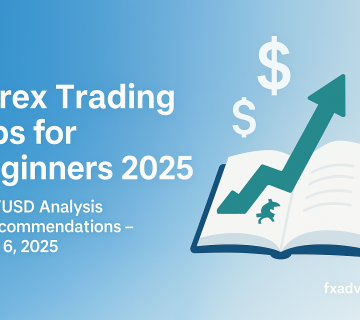The Effect of Rising Yields on Forex Trading: A Deep Dive into Opportunities and Risks
Introduction
Forex trading relies heavily on understanding economic indicators, especially yields. One of the most important concepts for traders is understanding how rising yields affect currency movements. This article will walk you through the critical aspects of yields in Forex trading, focusing on how traders can adapt to these changes and leverage them for profit. For a broader explanation of Forex basics, you can visit our article on understanding Forex trading.
Understanding Yields in Forex: An Essential Overview
In Forex, yields represent the returns an investor earns on currency holdings, often tied to interest rates. To delve deeper into the concept of yields and interest rates, check out our detailed blog post on interest rates and their influence on currency pairs.
Why Traders Closely Monitor Yields
For Forex traders, yields serve as a strong indicator of potential currency movement. A rise in a country’s bond yield tends to attract foreign investment, increasing demand for that currency and pushing its value up. If you’re keen on more strategies for maximizing yield opportunities, take a look at this article.
How Do Rising Yields Impact Currency Prices?
When yields rise, the currency usually strengthens. For instance, the U.S. dollar typically appreciates as U.S. Treasury yields increase. If you’re interested in how the U.S. dollar behaves in global markets, read our comprehensive guide on USD performance and market influences.
Key Factors Leading to Rising Yields
Several factors contribute to rising yields:
How to Identify Approved Forex Brokers and Avoid Scams
Central Bank Policies
Central banks play a crucial role in determining yield trends. An increase in interest rates by the central bank typically results in rising yields. To understand more about central bank decisions and their effect on Forex markets, check out our post on how central bank policies shape the Forex market.
Inflation and GDP Growth
Higher inflation and strong GDP growth lead central banks to increase interest rates, thereby driving yields upward. If you want to explore how inflation correlates with Forex, this blog post on inflation and Forex could provide valuable insights.
The Global Economic Landscape and Its Influence on Yields
Global events like trade disputes and geopolitical instability can trigger yield changes. For example, a rise in U.S. yields often attracts international capital, weakening emerging market currencies. To learn more about global macroeconomic factors, visit our article on the impact of global events on Forex trading.
Rising Yields and the Impact on Emerging Market Currencies
Emerging markets are sensitive to rising yields in developed economies. As yields in major economies like the U.S. rise, investors tend to withdraw from riskier emerging market assets, leading to currency depreciation. For further analysis of emerging market trends, check out our breakdown of emerging market dynamics.
Profit Opportunities in a Rising Yield Environment
Higher yields can lead to more lucrative opportunities for traders, particularly with the carry trade strategy, where investors borrow in low-yield currencies and invest in high-yield ones. Learn more about this strategy in our post on carry trades and Forex profits.
Risks of Trading During Periods of Increasing Yields
While rising yields offer potential profit, they also carry significant risks, such as increased market volatility. For tips on managing Forex risks, visit our article on risk management strategies for Forex traders.
Rising Yields and Their Relationship to Safe-Haven Currencies
Safe-haven currencies like the Japanese yen (JPY) and Swiss franc (CHF) often rise when yields in riskier markets increase. If you’re interested in how these currencies act as shelters during volatile times, take a look at our in-depth guide to safe-haven currencies.
Bond Markets and Their Connection to Forex Yields
Bond yields are closely related to currency values. A rise in bond yields usually strengthens the associated currency. Our blog post on bond markets and their influence on Forex trading can provide more insights into this connection.
The Role of Central Banks in Managing Yield Increases
Central banks influence yields through their monetary policies, which directly affect Forex markets. For a better understanding of central bank strategies, explore our article on how central banks manage currency values.
Case Studies: How Rising Yields Have Historically Moved Forex Markets
Historically, rising yields have triggered significant currency movements. The early 1980s are an excellent example, where the U.S. Federal Reserve’s interest rate hikes led to soaring U.S. yields and a stronger dollar. Read more about historical case studies in our Forex trading history section.
Tools for Staying Ahead of Yield Changes in Forex
Successful traders utilize a range of tools to track yield trends, from economic calendars to yield curve data. To help you stay informed, check out our post on the best tools for Forex traders.
Effective Strategies for Trading in a High-Yield Climate
In high-yield environments, balancing technical and fundamental analysis becomes crucial. If you need more detailed strategies for trading in such climates, visit our blog post on Forex strategies for different market conditions.
Conclusion
Forex Advisor Platform
Rising yields create both challenges and opportunities in Forex trading. While they may signal potential profit, traders must stay informed and apply risk management techniques to navigate the volatility of a high-yield market.
FAQs
- How can I use central bank announcements to predict yield changes?
By following central bank decisions on interest rates and monetary policy, traders can anticipate changes in yields and adjust their strategies accordingly. For more on this, check out our post on central bank policies. - Is it more profitable to trade in currencies tied to rising yields?
High-yield currencies can offer better returns, but they come with increased risks. For a balanced approach, explore our Forex trading strategies. - What is the correlation between bond yields and Forex markets?
Bond yields and Forex markets are closely connected. Rising bond yields often lead to stronger currencies. Learn more in our blog post about bond markets and Forex. - How do economic indicators affect Forex yields?
Indicators like GDP growth and inflation affect yields. To understand how, visit our analysis of economic indicators in Forex. - What are the long-term effects of rising yields on the Forex market?
Sustained yield increases may eventually cause inflation, affecting long-term market stability. Learn more in our Forex market overview.Visit our blog to learn more













